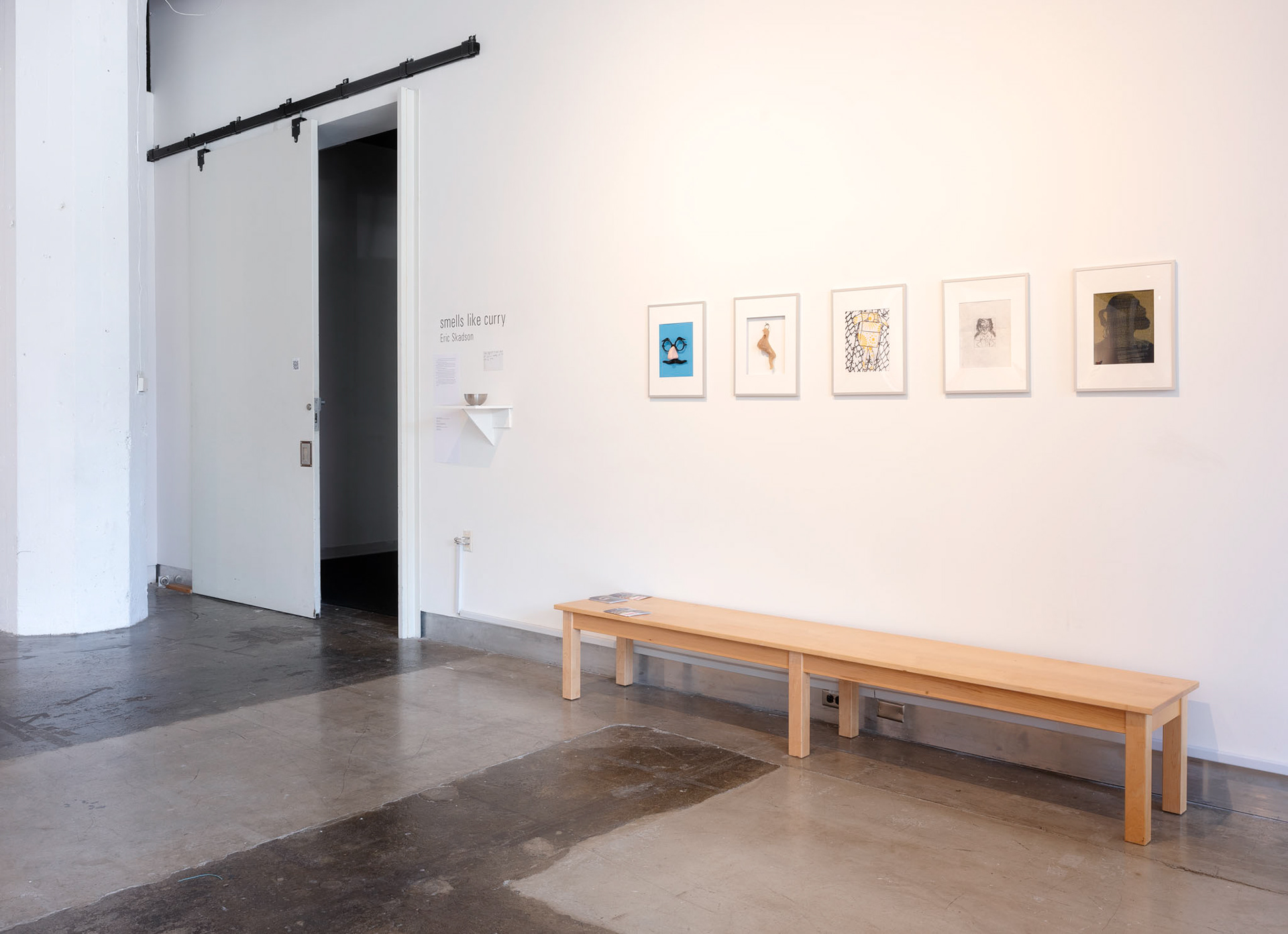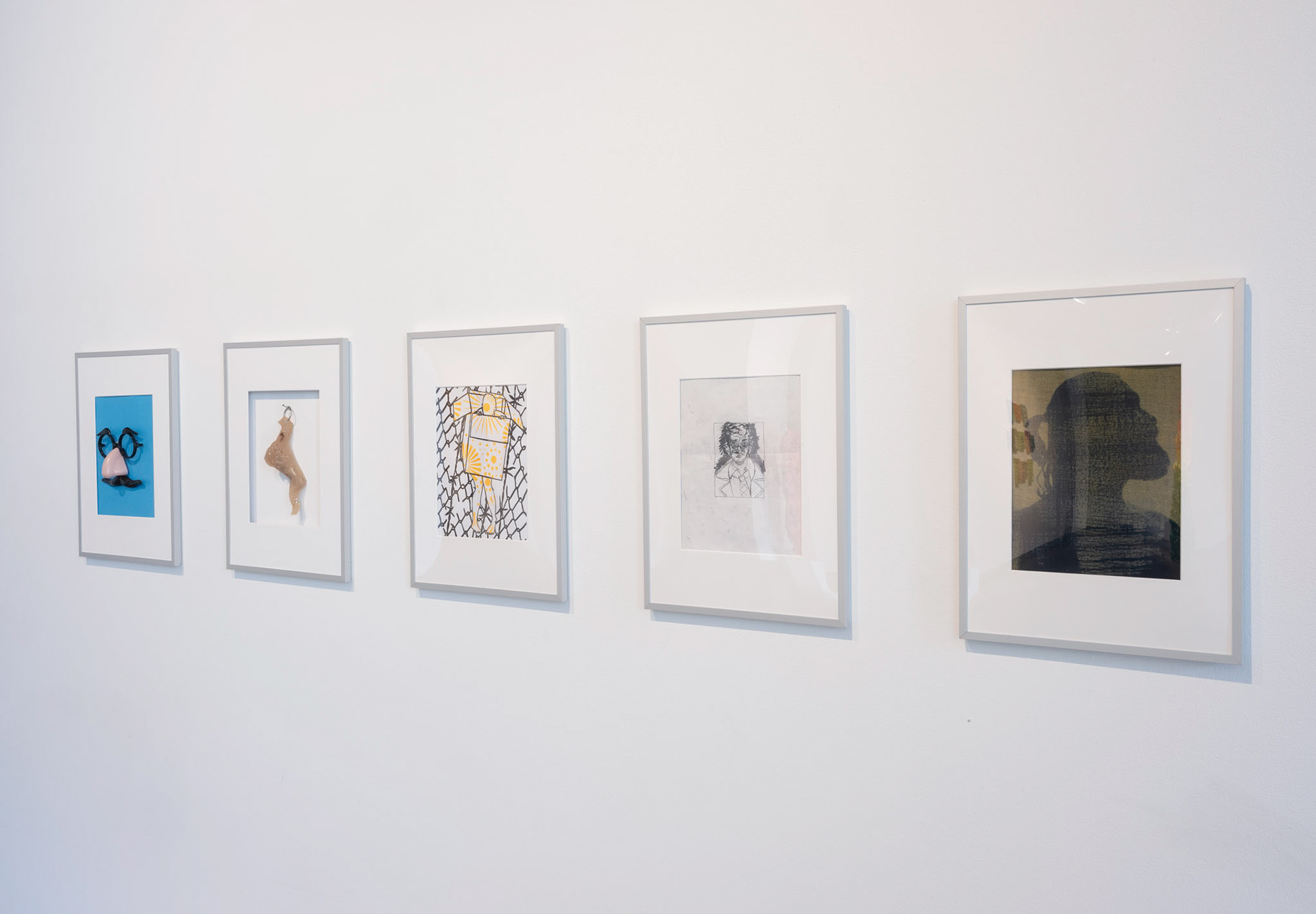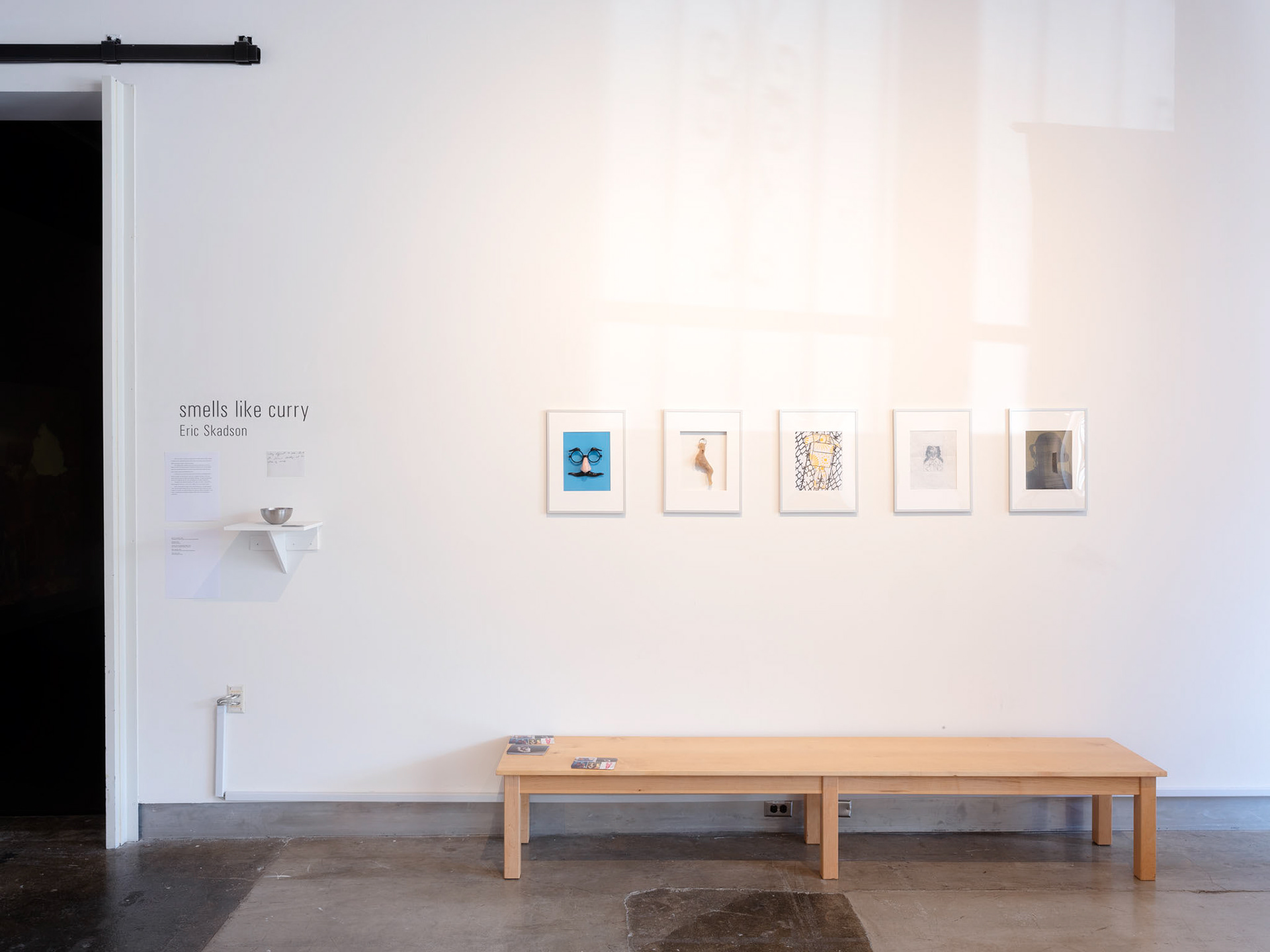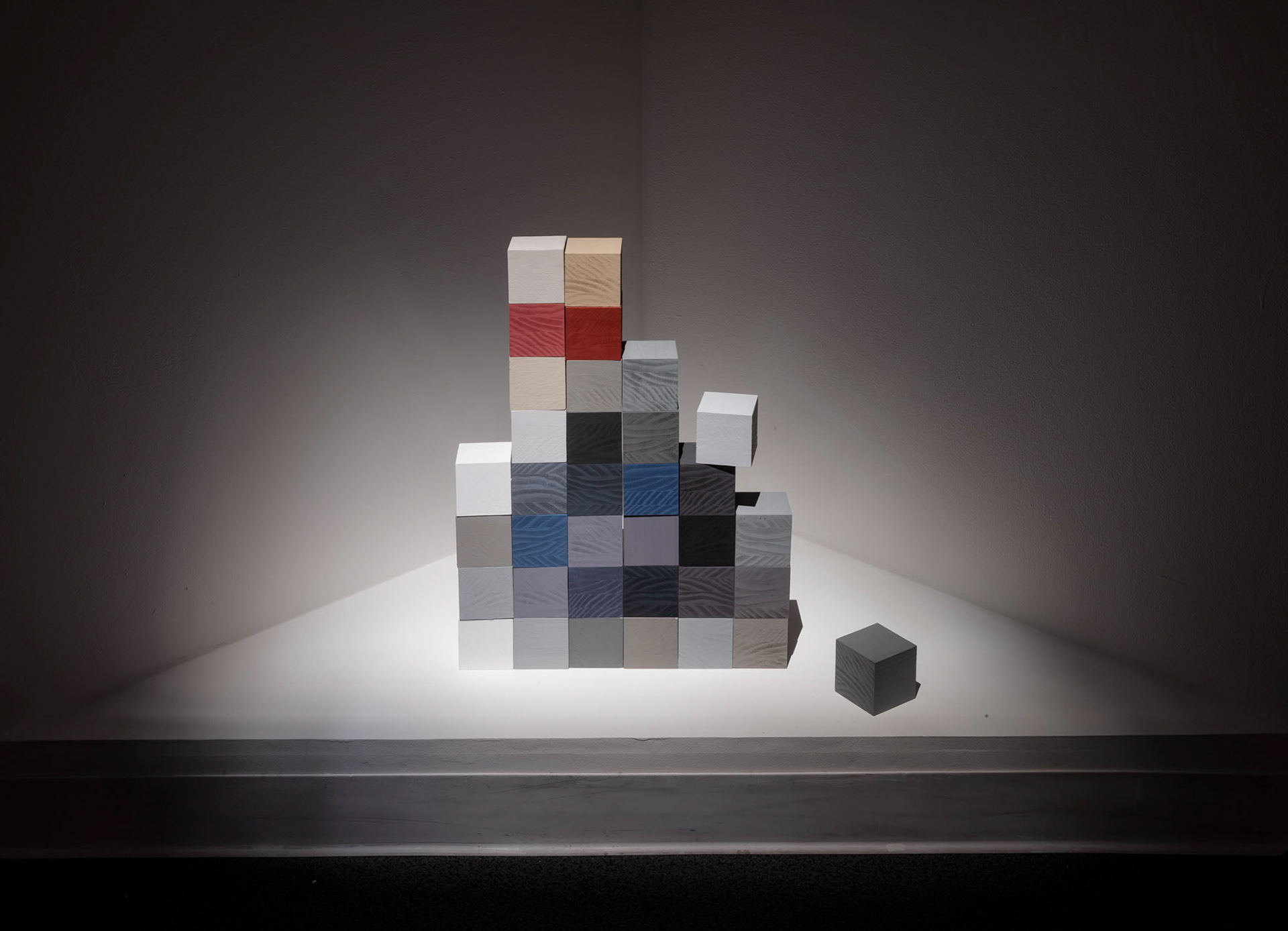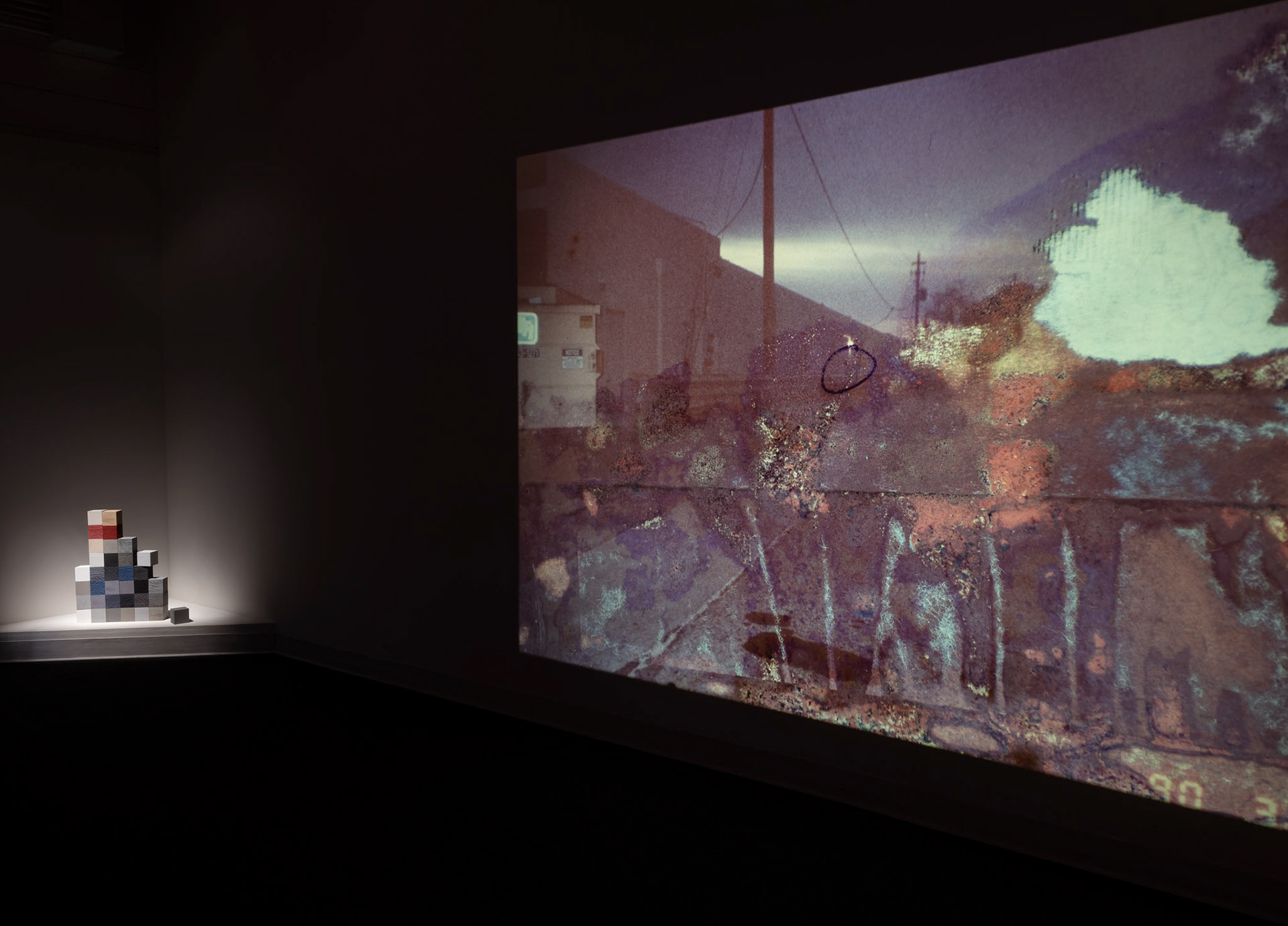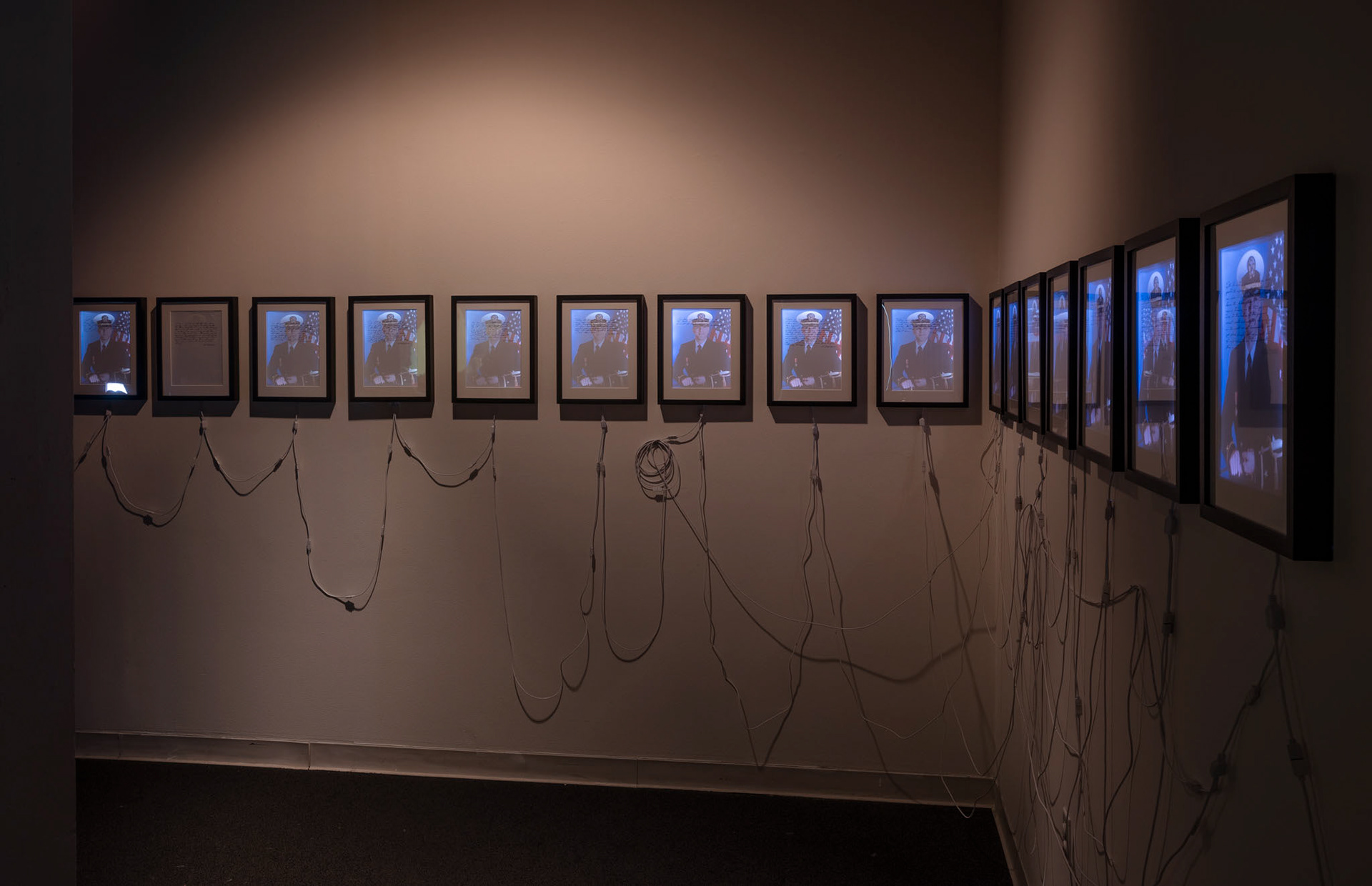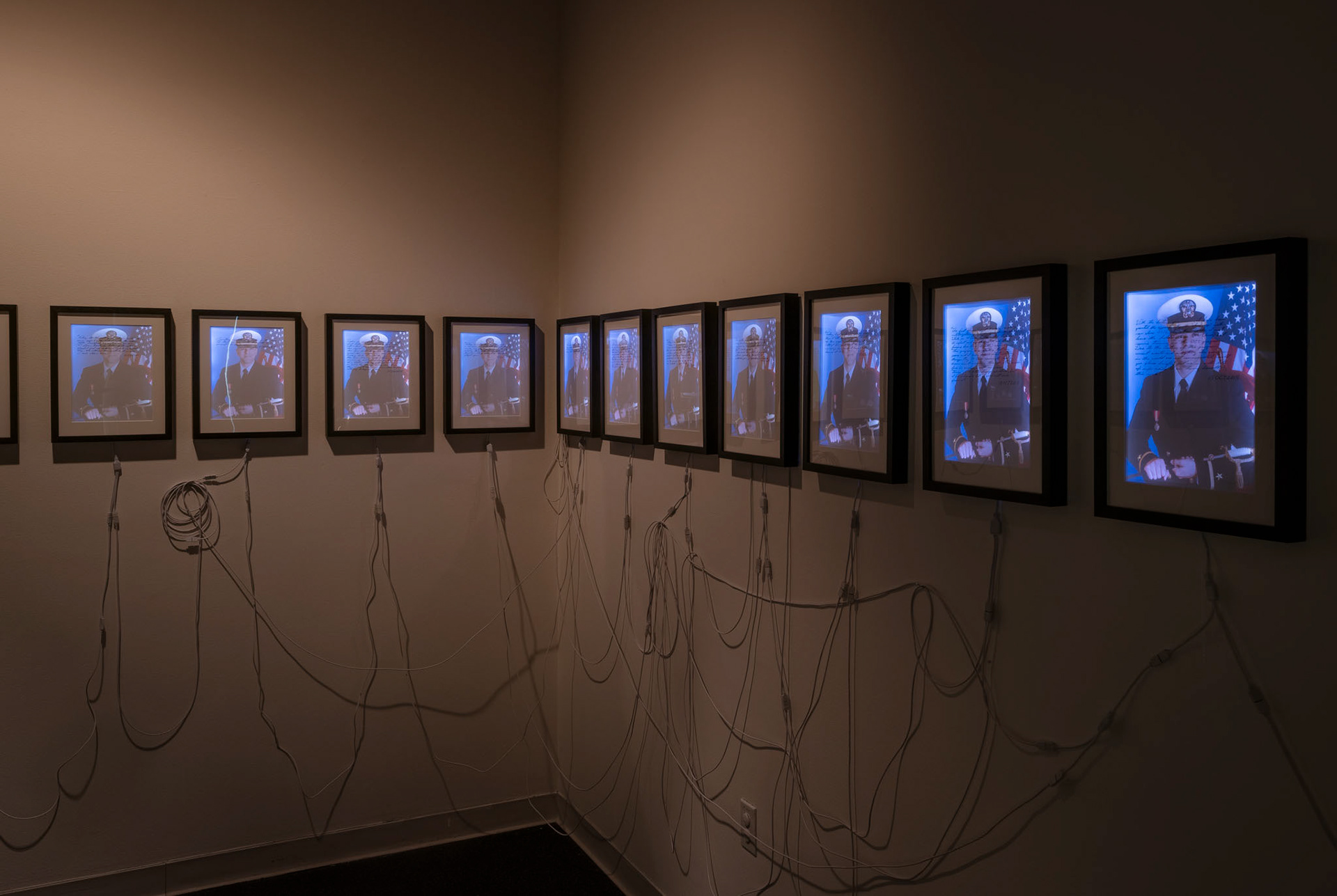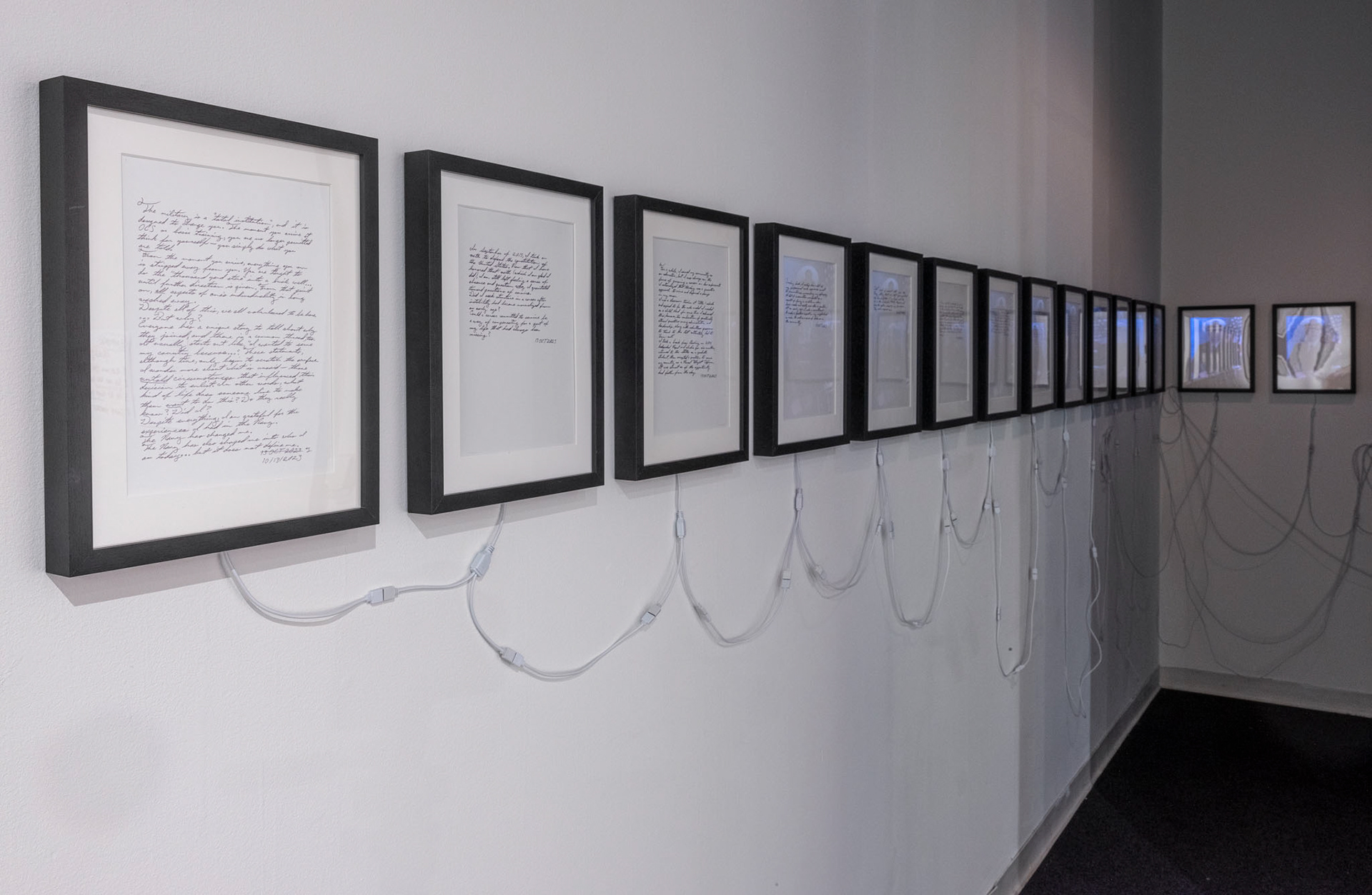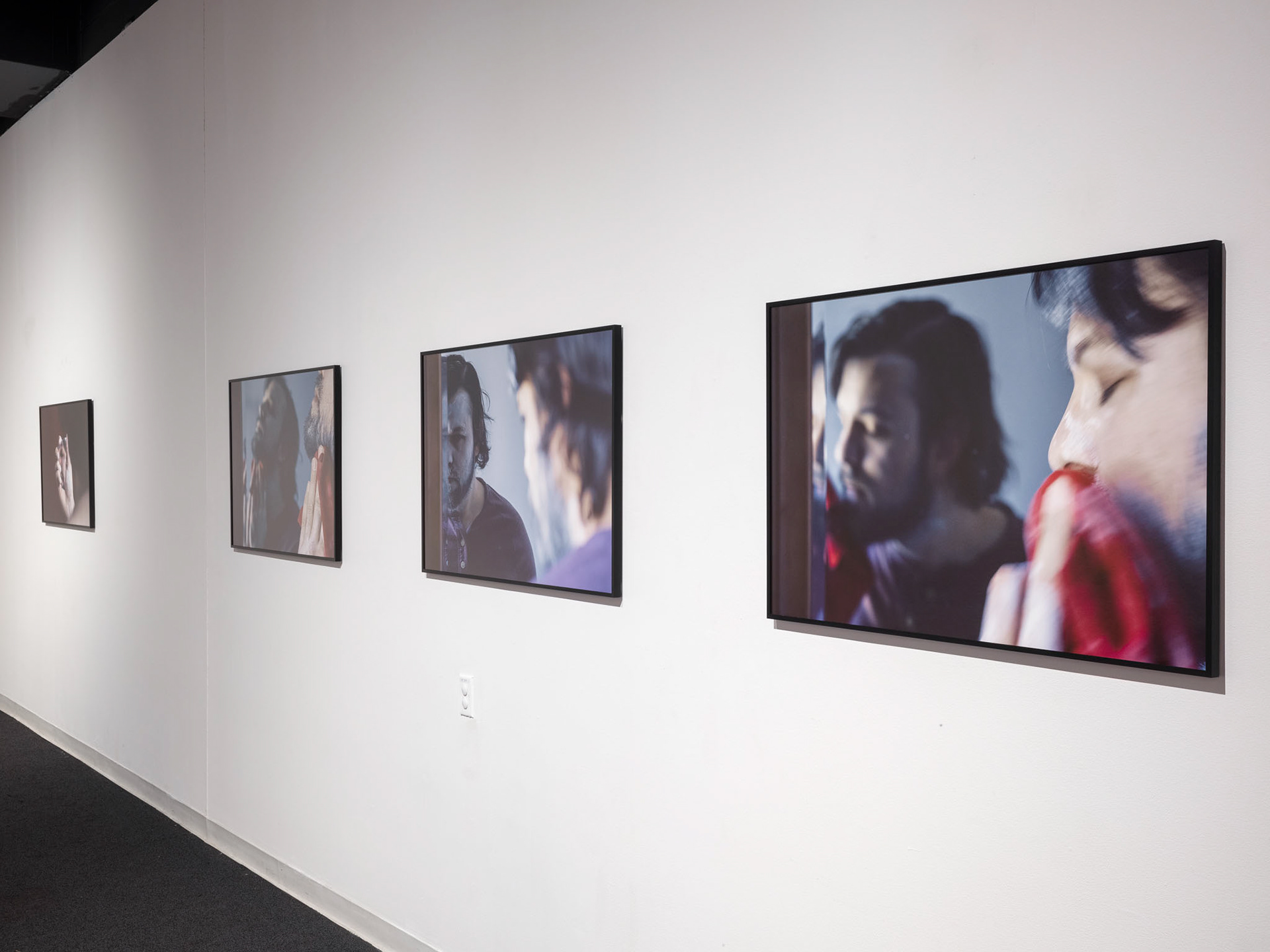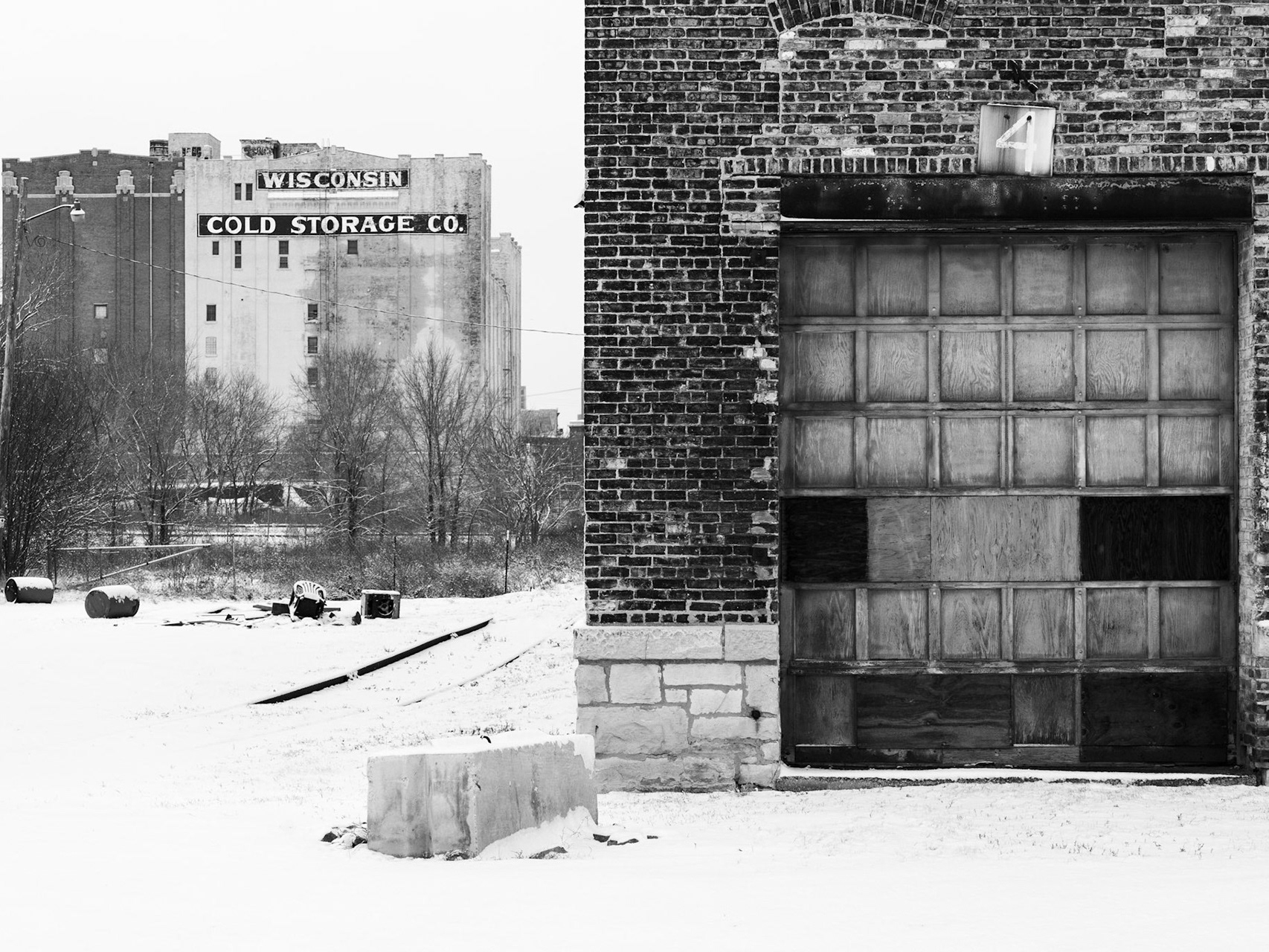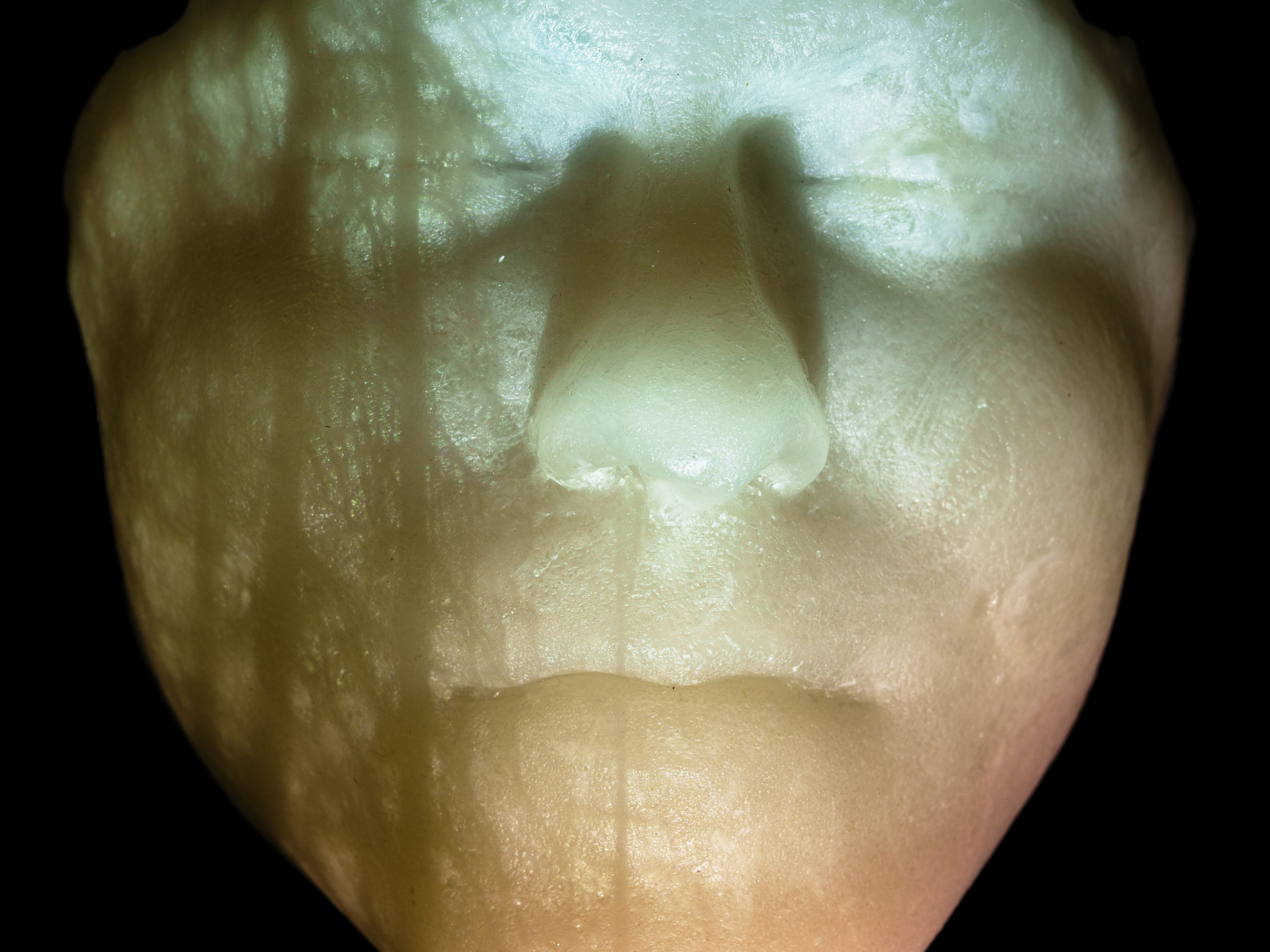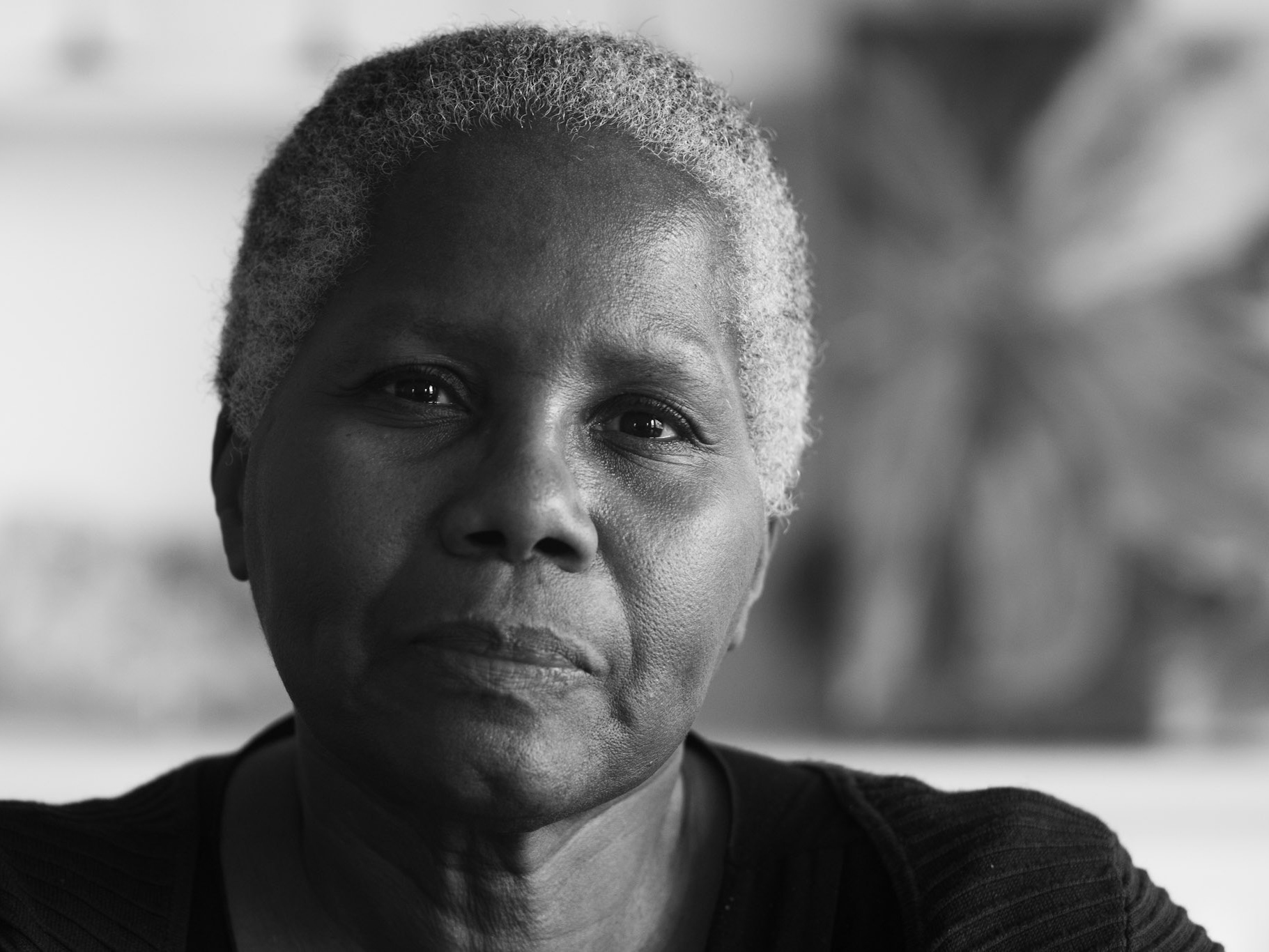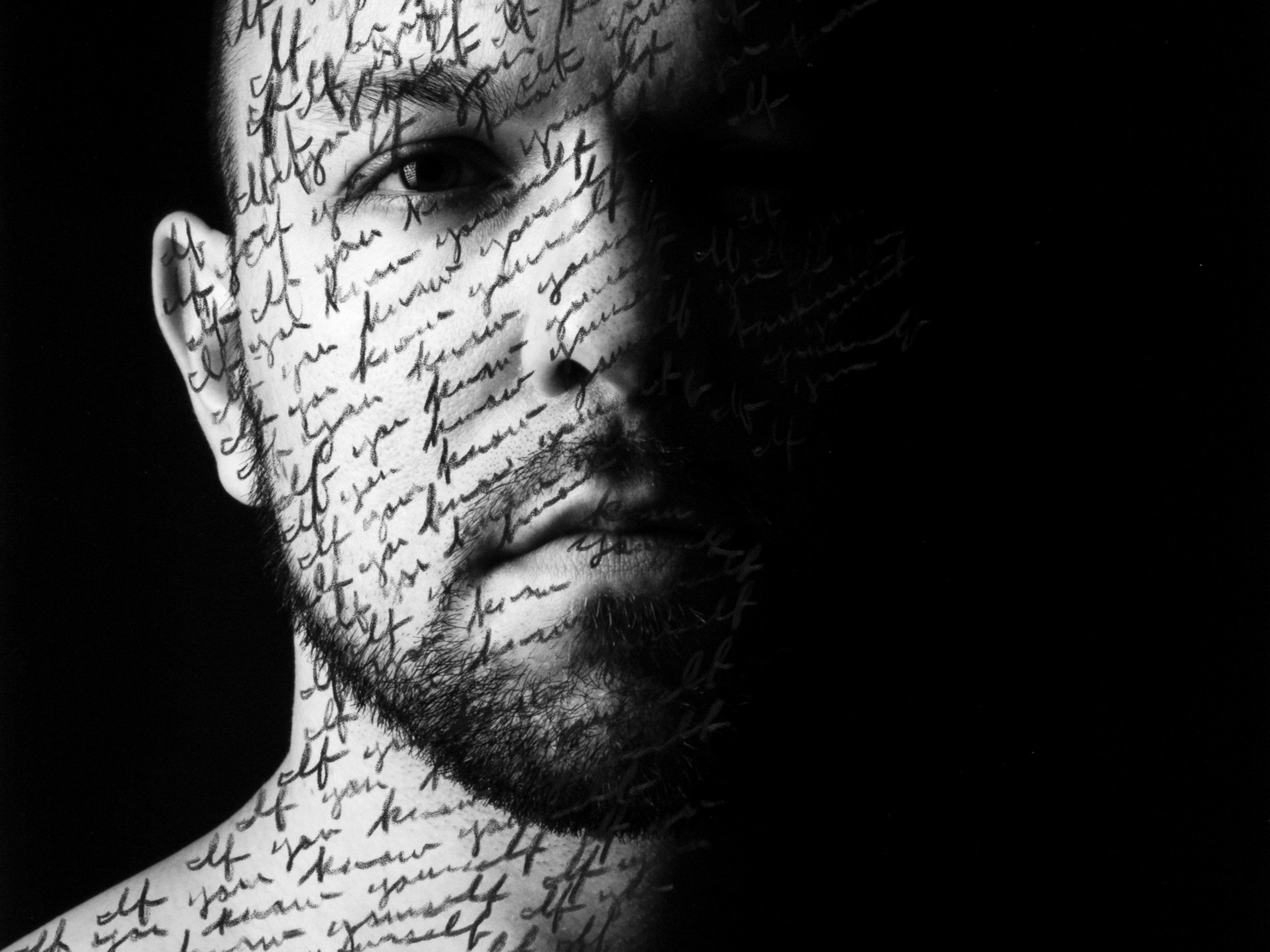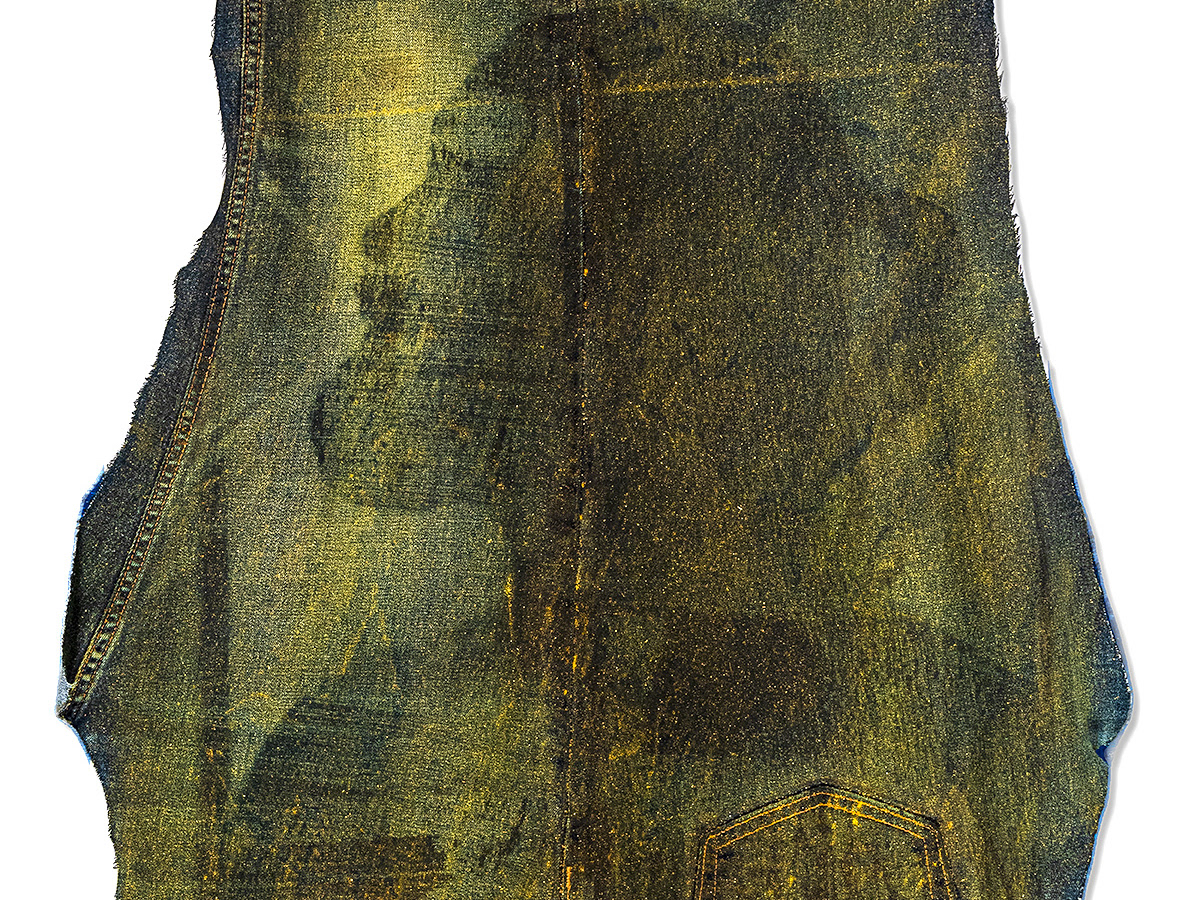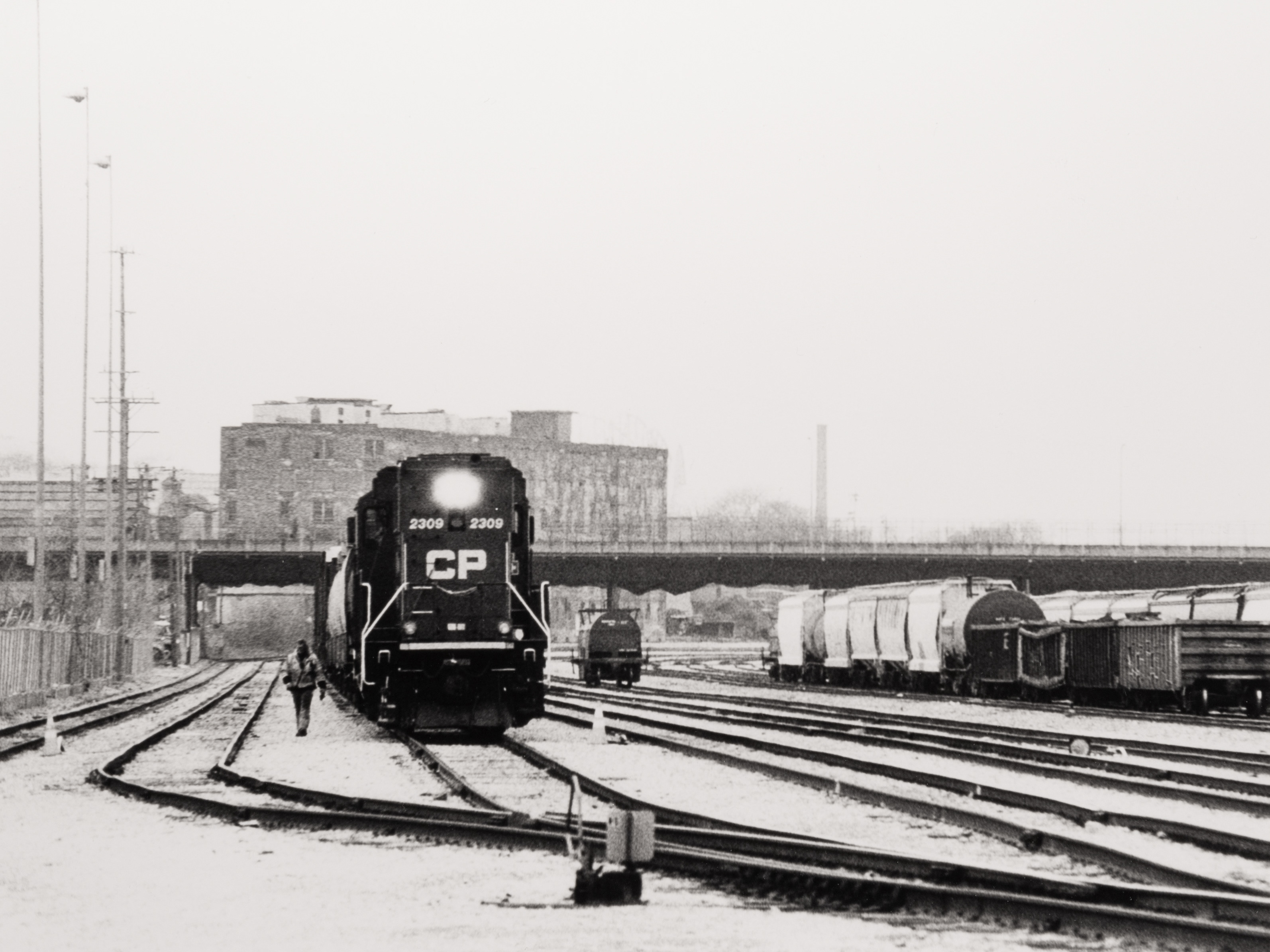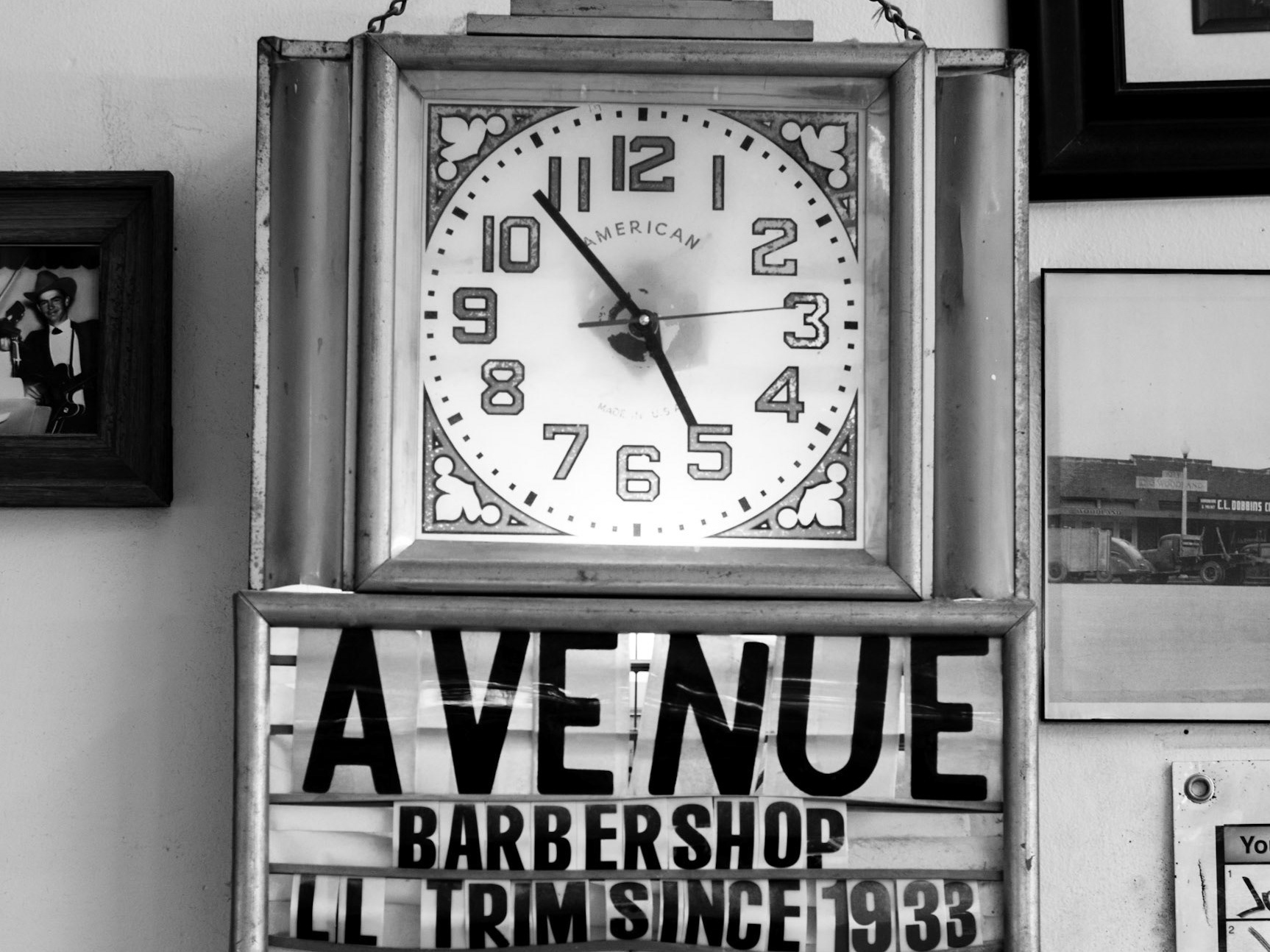smells like curry
Other than myself, I only have a single piece of evidence that my father existed: a snapshot with no discernible person and the words, “Very hard to see, but it’s Eric’s daddy at his place of work” written on the back. This image is posted above a stainless-steel bowl containing curry powder and orange turmeric. These pungent spices are widely used in Indian cuisine and engages a viewer’s olfactory senses as they study the writing on the back of the 4in x 6in image at the entrance of the exhibition.
Knowledge about my biological father was limited to what my mother told me: that “he was from India, wore a maroon turban, and smelled like curry”. His absence created a vacuum in my life—becoming the catalyst for a lifelong journey of self-discovery and belonging. The wooden sculpture and projected installation speak to a time in early childhood when I neither had the words, nor the developmental ability to process the complexities of having a parental figure missing. Even as an adult, I felt the urge to construct this parental figure out of wooden blocks. Next, the front of the archival image (posted at the entrance) is projected in the corridor, illuminating a 6ft x 9ft space. The compulsion to repeat is evident as this installation cycles through 80 slides of the same photo—exhausting my paternal family album. The warm light produced by the apparatus instills the nostalgic feel and the cadence of each click reinforces a sense of structure that I had always craved.
As I continue to process this, I realize how major life decisions were influenced by deficiencies rooted in childhood. I aspired to be the person I needed at an early age and pursued roles of mentorship and leadership later in life. My career path reflects this epiphany as I welcomed opportunities to serve my community as a classroom teacher and my country as an officer in the Navy.
I enlisted in the Navy in 2015 and found comfort in the rigidity of this paternal institution, but it was no substitute for the things I truly yearned for. The Navy Journal installation uses the repetition of 20 framed images to show time passing. These entries date back to my active-duty service and continue to the present day. Moreover, each entry is backlit to reveal my military service portrait—a posed image intended to emulate the ideal Naval Officer after their transformation in basic training. The luminosity of these journals gradually dims as my cursive handwriting and the white space surrounding the portrait become more evident and fill the frame. Below the journals are an entanglement of the cables that are the source of the light in the frames, they gradually find rhythm and coherence after the series turns the corner and moves to another wall.
The procession ends with a photographic series of self-portraits. In the 26in x 120in tryptic, the first image captures a piercing gaze as I confront the duality of passing as white while choosing to conceal a side of myself that I struggle to connect with. Throughout the series, I perform the act of removing white paint from my skin with a red cloth in the comfort of my own home. The final, standalone image of the series is a closeup of my hand clenching a shattered mirror with white paint residue collected beneath my fingernails. Framed within the fragment is an out-of-focus reflection of myself. This performance portrays my acknowledgement that I exist between identities—between the way I am perceived by others and the way I see myself. Red reappears in the scenes as a stand-in for the turban worn by my estranged biological father. It is a way for me to reclaim a sense of agency and pay homage to my estranged Punjabi heritage.
In combination, smells like curry takes the viewer on my personal journey through work grounded in photography, performance, and sculpture. Each piece challenges the viewer to take an introspective look at their experiences in relation to the formation of their own identity. It is part of the human experience to feel a sense of absence. How has this absence manifested? How is it filled—will it ever be resolved? These are the questions I ask the viewer to process as they immerse themselves in the exhibition.

